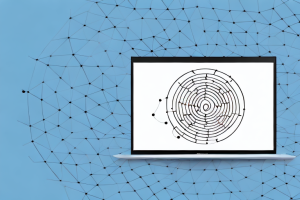How to fix a distorted audio issue on a Dell XPS 13 7390
7 min read
A dell xps 13 7390 laptop with a sound wave coming out of the speakers
Are you experiencing distorted audio when using your Dell XPS 13 7390 laptop? This can be quite frustrating, especially when you need to listen to music, watch videos or participate in video conferencing sessions. However, there are several ways to solve this issue and get your audio sounding crisp and clear again. In this article, we will go through a step-by-step guide on how to fix a distorted audio issue on a Dell XPS 13 7390 laptop.
Identifying the cause of distorted audio on your Dell XPS 13 7390
The first step in resolving distorted audio is to identify the root cause. Some of the common causes include outdated drivers, software and hardware incompatibilities, incorrect sound settings and even dirty jacks and ports. By troubleshooting and identifying the problem area, you’ll be a step closer to resolving distorted audio.
Another possible cause of distorted audio on your Dell XPS 13 7390 is a damaged or faulty speaker. If you have ruled out all other potential causes and the audio is still distorted, it may be time to have your speaker checked by a professional. It’s important to address this issue promptly to prevent further damage to your device.
Troubleshooting common audio problems on a Dell XPS 13 7390
Before moving onto more complex solutions, it’s worth checking if the issue is within basic settings. Check if the volume is turned up, if external speakers or headphones are properly connected, or if the audio is muted. Also, try playing different audio from various sources to determine if the distortion is related to a particular program or media file.
If the basic settings check doesn’t solve the issue, try updating the audio driver. Outdated or corrupted drivers can cause audio problems. You can download the latest audio driver from the Dell website or use the Dell SupportAssist tool to automatically update all drivers on your device. If updating the driver doesn’t work, try running the Windows Audio Troubleshooter or contacting Dell support for further assistance.
Updating audio drivers to fix distortion issues on a Dell XPS 13 7390
Outdated drivers can often cause distorted audio on your Dell XPS 13 7390 laptop. To check for driver updates, go to the manufacturer’s website and search for the latest audio driver. After downloading and installing the latest driver, perform a restart to let the changes take effect.
It is important to note that if updating the audio driver does not fix the distortion issue, there may be other underlying problems with your laptop’s hardware or software. In this case, it is recommended to contact Dell’s customer support for further assistance.
Additionally, to prevent future audio issues, it is recommended to regularly check for driver updates and install them as needed. This can help ensure that your Dell XPS 13 7390 laptop is running smoothly and efficiently.
How to disable audio enhancements to improve sound quality on a Dell XPS 13 7390
Audio enhancements are features that run on top of the default audio settings on your Dell XPS 13 7390. Some of these enhancements can cause distortion and affect the overall audio quality. To disable audio enhancements, go to the sound settings, click on ‘Playback,’ and then select ‘Properties.’ Under the ‘Enhancements’ tab, uncheck all the boxes, and then click ‘OK’ to save the changes.
However, disabling audio enhancements may not always improve the sound quality. In some cases, the enhancements may actually enhance the audio quality. It is recommended to test the audio quality with and without the enhancements to determine which setting works best for you.
If you are still experiencing audio issues after disabling the enhancements, you may need to update your audio drivers. Go to the Dell website, enter your Dell XPS 13 7390 model number, and download the latest audio drivers. Install the drivers and restart your computer to see if the audio quality has improved.
Cleaning the audio jack and ports to eliminate distortion on a Dell XPS 13 7390
Dirt or debris inside the audio jack or ports can disrupt the audio signal and cause distortion. To clean the jack and ports, use a cotton swab dipped in alcohol to remove any dirt or debris. Take extra care not to damage the delicate contacts inside the jack or ports.
It is important to note that if the distortion persists even after cleaning the jack and ports, the issue may be with the audio driver or hardware. In this case, it is recommended to update the audio driver or contact Dell support for further assistance.
Additionally, to prevent dirt and debris from accumulating in the audio jack and ports, it is advisable to cover them when not in use. This can be done using a small piece of tape or a rubber plug specifically designed for this purpose.
Adjusting sound settings for better audio performance on a Dell XPS 13 7390
If the audio is still distorted, it may be necessary to adjust the sound settings further. Check the sound card properties, and make sure that the quality is set to the highest available option. Additionally, disable any sound effects that may be enabled and adjust the equalizer settings to your liking.
Another way to improve audio performance on a Dell XPS 13 7390 is to update the audio driver. Go to the Dell website and download the latest audio driver for your device. Install the driver and restart your computer. This should help to resolve any issues with the audio.
If you are still experiencing audio problems, it may be a hardware issue. Contact Dell support for assistance or take your device to a certified technician for repair. It is important to address any hardware issues as soon as possible to prevent further damage to your device.
Resolving distorted audio caused by incompatible software or hardware on a Dell XPS 13 7390
Incompatible software or hardware may cause distorted audio. To resolve this issue, try to uninstall recently installed software, disconnect any external hardware, and then restart the system. If the distortion is still present, the hardware or software may not be compatible with your Dell XPS 13 7390, and you may need to find alternate solutions.
One alternate solution is to update the drivers for your audio hardware. This can be done by going to the Dell website and downloading the latest drivers for your specific model. Another solution is to use an external sound card that is compatible with your Dell XPS 13 7390. This can provide better audio quality and eliminate any compatibility issues with your internal hardware or software.
It is also important to check the audio settings on your Dell XPS 13 7390. Make sure that the volume is not too high, as this can cause distortion. Additionally, check the audio format settings to ensure that they are compatible with your hardware and software. If you are still experiencing distorted audio, it may be necessary to contact Dell support for further assistance.
Fixing distorted audio when streaming media on a Dell XPS 13 7390
If the distorted audio is mainly when streaming media, check your internet connection. A slow or interrupted connection may cause audio distortion. Additionally, check that the streaming settings are correctly configured. If in doubt, try a different streaming site, or device.
Another possible cause of distorted audio when streaming media on a Dell XPS 13 7390 is outdated or faulty audio drivers. Check the Dell website for any available updates for your audio drivers and install them if necessary. You can also try uninstalling and reinstalling the audio drivers to see if that resolves the issue.
If the above solutions do not work, it may be a hardware issue. Check the audio ports and cables for any damage or loose connections. You can also try using external speakers or headphones to see if the distortion persists. If the issue still persists, it may be best to contact Dell support for further assistance.
Checking for Windows updates and patches that might solve audio issues on a Dell XPS 13 7390
Make sure your Dell XPS 13 7390 laptop is up-to-date with the latest Windows updates and patches. These updates may include bug fixes and new drivers, which can solve audio distortion issues. Go to ‘Settings,’ click on ‘Update and Security,’ and select ‘Check for updates.’ If an update is available, download and install it.
It is also recommended to check for any updates or patches specifically related to audio drivers. You can do this by going to the Dell website and searching for the latest audio driver for your specific model of XPS 13 7390. Download and install the driver, following the instructions provided by Dell. This can often solve audio issues that are not resolved by general Windows updates.
Troubleshooting distorted audio during video conferencing sessions on a Dell XPS 13 7390
When facing distorted audio during video conferencing sessions, consider the quality of the internet connection. Ensure that there is sufficient bandwidth and that the software settings are correct. Additionally, check the microphone settings, and test for background noise, which can also distort audio quality.
If the above steps do not resolve the issue, try updating the audio drivers on your Dell XPS 13 7390. Outdated or corrupted drivers can cause audio distortion during video conferencing sessions. You can update the drivers manually or use a driver update tool to automatically download and install the latest drivers.
Seeking professional technical assistance for persistent distorted audio issues on a Dell XPS 13 7390
If the above methods fail to address audio distortion, professional technical assistance may be required. Contact Dell support or a qualified technician who can thoroughly assess your Dell XPS 13 7390 laptop and recommend the best solutions for resolving distorted audio issues.
In conclusion, distorted audio on your Dell XPS 13 7390 laptop is a manageable issue. Try out some, if not all, of the methods described above and enjoy crystal-clear audio once again. In case of persistent problems, do not hesitate to seek professional technical assistance.
It is important to note that attempting to fix audio issues on your own can sometimes cause further damage to your laptop. Therefore, seeking professional technical assistance is highly recommended to avoid any potential risks or complications.


